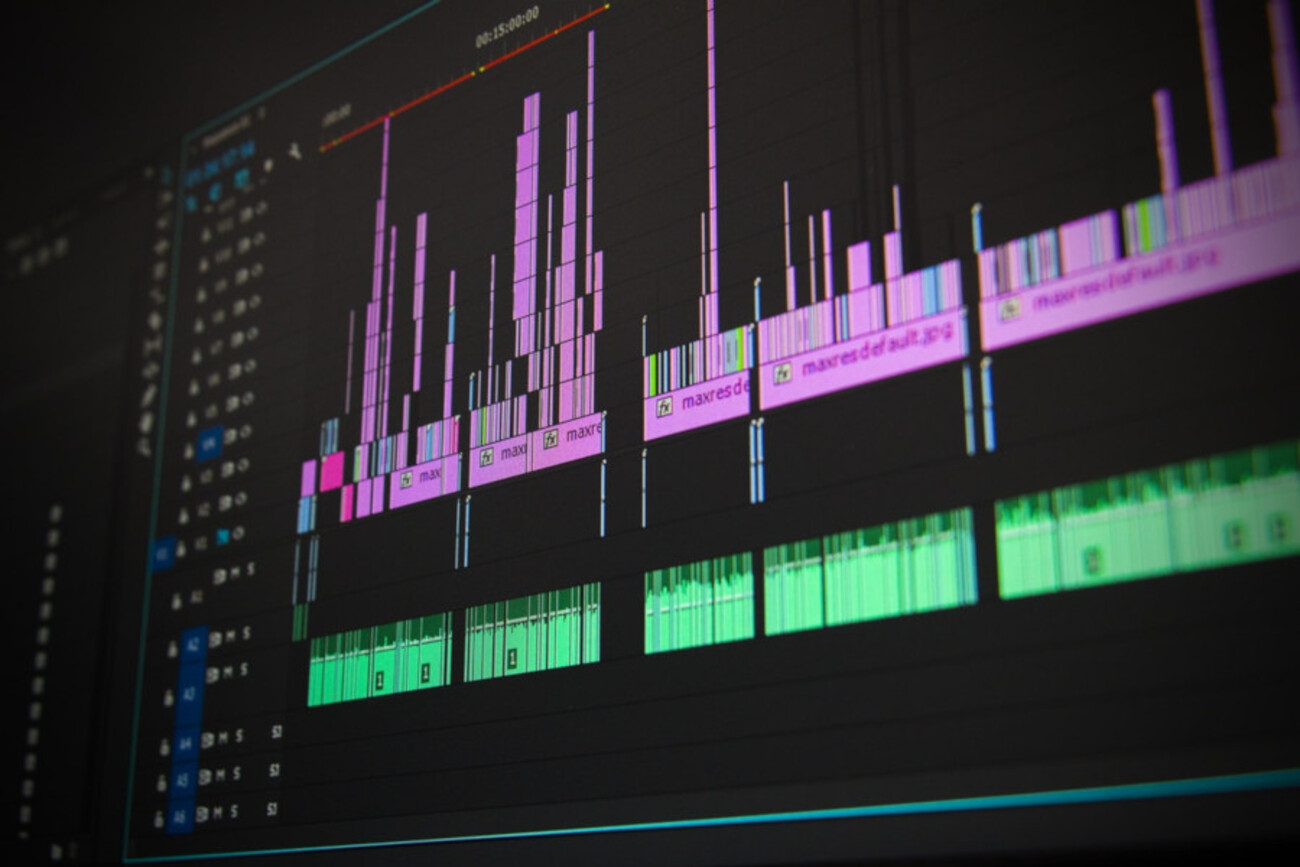Home>Production & Technology>Cover Song>How To Give Cover Song Credits On Album


Cover Song
How To Give Cover Song Credits On Album
Modified: March 5, 2024
Learn how to properly give cover song credits on your album with this comprehensive guide. Find out the essential steps and avoid any copyright infringement issues.
(Many of the links in this article redirect to a specific reviewed product. Your purchase of these products through affiliate links helps to generate commission for AudioLover.com, at no extra cost. Learn more)
Table of Contents
- Introduction
- Understanding Cover Songs
- Importance of Giving Cover Song Credits
- Legal Requirements for Cover Song Credits
- How to Give Cover Song Credits on an Album
- Step 1: Identify the Original Song and Copyright Holder
- Step 2: Determine the Appropriate Credit Format
- Step 3: Include the Cover Song Credits in the Album’s Liner Notes
- Step 4: Display Cover Song Credits on Digital Platforms
- Step 5: Double-Check and Review Cover Song Credits
- Conclusion
Introduction
Music has the power to connect people across cultures and generations. And one way that artists pay homage to their musical influences is by recording cover songs. A cover song is a new rendition of a previously released song, performed by an artist other than the original creator. These reimagined versions often bring a fresh perspective to well-known tunes, captivating audiences with their unique interpretation.
However, when it comes to covering someone else’s song, there are certain responsibilities that need to be addressed. One crucial aspect is giving proper credit to the original songwriters and copyright holders. Not only is this a legal requirement, but it also shows respect for the artistry and creativity of the original creators.
In this article, we will delve into the world of cover songs and explore the importance of giving cover song credits on an album. We will discuss the legal requirements surrounding cover song credits and provide a step-by-step guide on how to properly include them. Whether you’re an aspiring musician, a music producer, or simply a fan of great music, understanding how to give cover song credits is essential in honoring the artists who came before.
Understanding Cover Songs
Before diving into the intricacies of giving cover song credits, it’s important to grasp the concept of cover songs and their significance in the music industry. A cover song is essentially a new performance or recording of an existing song that was previously released by another artist or songwriter. It involves taking someone else’s work and giving it a fresh interpretation, often adding a unique style or flair.
Cover songs have been a part of the music industry for decades, with artists from various genres and time periods putting their own spin on popular tracks. They allow musicians to pay tribute to influential artists, showcase their vocal abilities or instrumental skills, or simply connect with their audience through familiar melodies.
One notable aspect about cover songs is that they are not limited to a specific genre or era. Artists ranging from rock legends like The Beatles, who covered Buddy Holly’s “Words of Love,” to contemporary acts like Ed Sheeran, who famously covered Beyoncé’s “Drunk in Love,” have embraced the art of covering songs.
While cover songs can be performed live in concerts or shared on online platforms like YouTube, they also find a home on albums. Including cover songs on an album allows artists to showcase their range of musical influences and demonstrate their versatility as performers. Furthermore, cover songs can often attract new listeners who are familiar with the original version but are drawn to the artist’s unique interpretation.
It’s important to note that creating a cover song involves more than just copying and performing someone else’s work. Artists who want to record and distribute a cover song must obtain the necessary licenses and permissions from the original songwriters and copyright holders. This ensures that the proper royalties and credits are given to the original creators.
Now that we have a solid understanding of what cover songs are and their significance, let’s explore why giving cover song credits is crucial in the music industry.
Importance of Giving Cover Song Credits
When recording and releasing a cover song, giving proper credits to the original songwriters and copyright holders is not just a legal requirement; it is also a fundamental way of showing respect and appreciation for their creative work. Here are some key reasons why giving cover song credits is of paramount importance:
1. Recognition of Original Artists: Cover songs are essentially a tribute to the original artists whose work has inspired others. By providing cover song credits, artists acknowledge and give credit where credit is due, ensuring that the original creators receive recognition for their artistry.
2. Intellectual Property Rights: Copyright laws exist to protect intellectual property. By properly crediting the original songwriters and copyright holders, artists demonstrate their understanding and adherence to these legal rights. This helps maintain a fair and ethical music industry ecosystem.
3. Building Relationships and Collaboration: Crediting the original artists in cover songs can help foster positive relationships within the music community. It opens up opportunities for future collaborations, as it shows a level of respect and admiration for fellow musicians.
4. Preserving Musical Legacy: Cover songs have the power to introduce younger generations to older, classic tunes. By giving proper cover song credits, artists not only preserve the musical legacy of the original creators but also inspire new listeners to explore different styles and genres.
5. Transparency with Fans: Fans appreciate transparency and authenticity. By clearly stating the original songwriters and copyright holders, artists maintain trust with their audience and avoid any potential conflicts or misinterpretations regarding ownership of the song.
6. Setting an Industry Standard: When prominent artists make it a point to give cover song credits, it sets an industry standard for others to follow. This fosters a culture of respect and fairness in the music industry, ensuring that everyone involved receives due recognition and compensation for their creative contributions.
By understanding and embracing the importance of giving cover song credits, artists demonstrate their commitment to ethical practices in the music industry. It’s not just about compliance with legal requirements; it’s about acknowledging the artistic journey and influence of those who came before and paving the way for future collaborations and musical innovations.
Legal Requirements for Cover Song Credits
When it comes to covering someone else’s song, there are specific legal requirements that artists must adhere to in order to avoid copyright infringement and ensure proper credit is given. These requirements vary depending on the country and jurisdiction, but here are some general guidelines to keep in mind:
1. Obtaining Licenses: The first step in recording and releasing a cover song is obtaining the necessary licenses. In most cases, artists need to secure a mechanical license, which grants them the right to reproduce and distribute the cover song. Mechanical licenses can typically be obtained from the respective music publisher or through organizations like Harry Fox Agency in the United States.
2. Properly Attribute Songwriters and Copyright Holders: When giving cover song credits, it is crucial to accurately attribute the original songwriters and copyright holders. This includes mentioning their names and identifying their publishing companies, if applicable. This information can usually be found in the liner notes or on the original song’s official documentation.
3. Include All Contributing Songwriters: In some cases, a cover song may have multiple songwriters involved. It is important to credit all contributing songwriters of the original version, as failing to do so could lead to legal complications or claims of omission.
4. Consistency with Copyright Notices: Artists should ensure that their cover song credits align with any existing copyright notices associated with the original song. This includes using accurate copyright symbols, dates, and any additional information required to maintain consistency and clarity.
5. Consult Legal Counsel: It is always advisable to consult with legal professionals who specialize in copyright and intellectual property law, especially if you are unsure about the legal requirements or if your cover song falls under any specific exceptions or limitations in your jurisdiction. They can provide guidance and help navigate the legal complexities involved.
It is crucial to bear in mind that the legal requirements for cover song credits can vary from country to country and can be subject to changes in legislation. Staying informed and up to date with copyright laws and seeking professional advice when necessary will help ensure compliance with legal obligations and protect artists from potential legal disputes.
How to Give Cover Song Credits on an Album
Properly giving cover song credits on an album is essential to maintain transparency, comply with legal requirements, and show respect to the original songwriters and copyright holders. Here is a step-by-step guide on how to give cover song credits on an album:
Step 1: Identify the Original Song and Copyright Holder: Begin by identifying the original song and the respective copyright holder(s). This information can be found through research, contacting music publishers, or utilizing online databases like ASCAP or BMI.
Step 2: Determine the Appropriate Credit Format: Decide on a consistent format for the cover song credits. Typically, this includes listing the song title, the original songwriter(s), and the publishing company. You may also choose to include the release year and any relevant copyright symbols.
Step 3: Include the Cover Song Credits in the Album’s Liner Notes: The most common place to include cover song credits is in the album’s liner notes. Create a dedicated section specifically for cover song credits, ensuring they are clearly visible and easy to read. This allows listeners to easily identify the original creators of the covered songs.
Step 4: Display Cover Song Credits on Digital Platforms: In today’s digital age, it is important to ensure that cover song credits are also displayed on digital platforms where your album is available. This includes streaming services, online stores, and social media profiles. Check the specific requirements of each platform to understand how to properly include cover song credits.
Step 5: Double-Check and Review Cover Song Credits: Before finalizing the album, thoroughly review the cover song credits to ensure accuracy and consistency. Mistakes or omissions can lead to legal disputes and confusion. It’s a good practice to have a second set of eyes review the credits as well.
By following these steps, artists can effectively give cover song credits on an album, demonstrating their commitment to acknowledging the original creators and abiding by legal requirements. Remember that giving cover song credits is not only a legal obligation but also an important way to honor the artists who inspired your interpretations and to maintain transparency with your audience.
Step 1: Identify the Original Song and Copyright Holder
When giving cover song credits on an album, the first and most crucial step is to identify the original song and the respective copyright holder(s). Properly crediting the original creators ensures that they receive the recognition and compensation they deserve. Here’s how to identify the original song and copyright holder:
Research: Conduct thorough research to gather information about the original song. Utilize resources like music databases, music publishing directories, or online platforms that specialize in providing songwriting credits. These sources can help identify the songwriter(s) and the publishing company associated with the original version of the song.
Contact Music Publishers: In some cases, contacting the music publisher directly can provide accurate and up-to-date information about the original song and the copyright holder. Publishing companies can help you obtain the necessary licenses and provide guidance on how to properly credit the original creators.
Online Databases: Online databases like ASCAP, BMI, or SESAC contain information about songwriters and their publishing companies. These platforms can be valuable resources to validate and confirm the original songwriters and copyright holders.
Seek Professional Assistance: If you’re encountering difficulty in identifying the original song or the copyright holder, consider seeking professional assistance from music attorneys or copyright experts. They can assist you in navigating the complexities of copyright information and ensure accurate identification of the original creators.
It is important to remember that there may be multiple songwriters involved in the original song. Make sure to identify all contributing songwriters and their respective publishing companies. This helps ensure that all parties receive proper credit and royalties for their creative contributions.
Being meticulous in identifying the original song and copyright holder sets the foundation for properly giving cover song credits. It showcases your commitment to honoring the work of others and establishes a respectful and compliant approach when acknowledging the original creators on your album.
Step 2: Determine the Appropriate Credit Format
Once you have identified the original song and copyright holder, the next step in giving cover song credits on an album is to determine the appropriate credit format. Consistency and accuracy are key when presenting the credits. Here’s how to determine the appropriate credit format:
1. Song Title: Start by clearly indicating the title of the cover song. This allows listeners to easily identify which song is being covered on the album.
2. Original Songwriter: Credit the original songwriter(s) of the cover song. List their names in the order they appear in the original version, separating multiple songwriters with commas. For example, if the cover song is “Imagine” originally written by John Lennon, the credit would be “Written by John Lennon.”
3. Publishing Company: Include the publishing company associated with the original version of the song. This is typically the entity responsible for managing the copyright and administration of the song. It’s important to provide accurate and complete information to ensure proper acknowledgment and compensation. For example, “Published by Sony/ATV Music Publishing.”
4. Copyright Symbol and Year: Display the copyright symbol (©) followed by the year of the original song’s release. This adds a level of professionalism and helps establish the historical connection to the original work. For instance, “© 1980 John Lennon Publishing.”
5. Consistency with Existing Credits: Take note of any existing credits associated with the original song, such as those found in liner notes, official documentation, or other published materials. Make sure your cover song credits align with the existing information to maintain consistency and accuracy.
6. Formatting Considerations: Pay attention to formatting conventions, such as the use of capitalization, punctuation, and font styles. Keep the credits clear, legible, and consistent with the overall design of the album’s artwork and liner notes.
Remember, the goal is to properly attribute the original creators, so be meticulous in following the appropriate credit format. By doing so, you demonstrate respect for intellectual property rights and establish a standard of accuracy and professionalism in giving cover song credits on your album.
Step 3: Include the Cover Song Credits in the Album’s Liner Notes
One of the most common and important places to include cover song credits is within the album’s liner notes. The liner notes provide a designated space to acknowledge the original songwriters and copyright holders, ensuring that listeners can easily identify the source of the covered songs. Here’s how to include cover song credits in the album’s liner notes:
1. Dedicated Section: Create a dedicated section specifically for cover song credits. This allows for organized and easy-to-read presentation of the information. Consider giving the section a clear heading, such as “Cover Song Credits” or “Acknowledgments.”
2. Clear Formatting: Use a consistent and easily legible font style and size throughout the liner notes. You may choose to use bold or italic formatting to distinguish the cover song credits from the rest of the text, making them stand out for easy reference.
3. Song Title: Start each cover song credit entry with the title of the song being covered. This helps listeners quickly identify the specific track and understand which songs are covers on the album.
4. Original Songwriters: List the original songwriters’ names in the order they appear in the original version of the song. Separate multiple songwriters with commas. This provides proper acknowledgment to the individuals who created the original composition.
5. Publishing Company: Include the publishing company associated with the original song. This demonstrates that the necessary rights and permissions have been secured and ensures accurate representation of the copyright holders. Mention the publishing company name and, if applicable, any additional information associated with it.
6. Additional Information: Depending on the preferences or requirements of the original songwriters or copyright holders, you may want to include additional information, such as any specific licensing agreements or arrangements that were made. This can provide further transparency and clarity surrounding the use of the cover song.
7. Placement in Liner Notes: Strategically place the cover song credits within the liner notes to make them easily visible. Consider including them near the track listing or in a central location that is readily accessible to readers.
By including cover song credits in the album’s liner notes, you demonstrate a commitment to transparency and respect for the original creators. This ensures that listeners can easily identify and acknowledge the source of the covered songs and helps maintain a professional and compliant approach to giving cover song credits on your album.
Step 4: Display Cover Song Credits on Digital Platforms
In today’s digital age, it is crucial to extend the inclusion of cover song credits beyond the physical album’s liner notes. With the majority of music consumption happening through digital platforms, it is important to ensure that cover song credits are prominently displayed on these platforms as well. Here’s how to effectively display cover song credits on digital platforms:
1. Streaming Services and Online Stores: Most digital platforms, including streaming services like Spotify, Apple Music, and online stores like iTunes or Amazon Music, provide options for including credits with each track. Take advantage of these features and enter the cover song credits in the appropriate metadata fields provided by the platform.
2. Behind-the-Scenes or Credits Section: Some digital platforms have dedicated sections specifically for displaying additional information about an album or track. Utilize these sections to provide comprehensive credits for the cover songs. This ensures that listeners can easily access the information while streaming or purchasing the music.
3. Artist Profile or About Section: Platforms like Spotify and Apple Music allow artists to create artist profiles or include biographies in their “About” sections. Consider adding a dedicated subsection within these profiles to highlight the cover song credits. This provides a centralized location for fans and listeners to learn more about the covered songs and their original creators.
4. Social Media Profiles and Websites: Extend the display of cover song credits to your social media profiles and official artist websites. Include a dedicated page or section that lists the cover song credits associated with your album. This allows fans and visitors to access the information easily and reinforces your commitment to acknowledging the original songwriters and copyright holders.
5. Consistency Across Platforms: Ensure that the cover song credits are consistent across all digital platforms. Any variations or discrepancies in the credits can lead to confusion for listeners. Regularly review and update the cover song credits to maintain accuracy and uniformity.
6. Collaboration with Digital Distributors: If you work with a digital distributor or aggregator to distribute your music, discuss the inclusion of cover song credits with them. They may have specific guidelines or requirements for providing the necessary information to ensure proper display on different platforms.
By displaying cover song credits on digital platforms, you extend the recognition and acknowledgment of the original songwriters and copyright holders to a broader audience. This demonstrates your commitment to transparently sharing the credit information and helps foster an environment of respect and appreciation for their creative contributions.
Step 5: Double-Check and Review Cover Song Credits
Before finalizing your album, it’s crucial to double-check and review the cover song credits to ensure accuracy and completeness. This step is vital to avoid any potential errors or omissions that could lead to legal disputes or misunderstandings. Here’s how to effectively double-check and review cover song credits:
1. Verification of Information: Verify the accuracy of the cover song credits by cross-referencing them with reliable sources such as music publishing directories, official song documentation, or licensing agreements. Ensure that the information matches and aligns with the original songwriters and copyright holders.
2. Multiple Songwriters: If the cover song involves multiple songwriters, make sure that all contributing songwriters are properly credited. Check that each songwriter’s name, in the correct order, is included in the credits. Failure to include any songwriter could lead to legal complications or claims of omission.
3. Copyright Notices: Confirm that the cover song credits align with any existing copyright notices associated with the original song. This includes using the correct copyright symbol (©), the appropriate year of the song’s release, and any additional copyright information specific to the song or publishing company.
4. Consistency Across Formats: Ensure that the cover song credits are consistent across all formats, including the physical album’s liner notes, digital platforms, and other promotional materials. Consistency enhances professionalism and prevents confusion or discrepancies when presenting the credits to listeners and fans.
5. Proofreading: Proofread the cover song credits thoroughly to catch any typographical errors, misspellings, or formatting inconsistencies. Engage another set of eyes, such as a fellow band member or a trusted colleague, to review the credits for completeness and accuracy.
6. Legal Consultation: When in doubt, consult with a legal professional who specializes in copyright and intellectual property law. They can review the cover song credits for compliance with legal requirements and provide guidance on any specific considerations or nuances.
By diligently double-checking and reviewing the cover song credits, you ensure that the information presented to your audience is accurate, respects the original songwriters, and meets legal obligations. Taking the time to thoroughly review the credits demonstrates your professionalism and commitment to upholding ethical practices in the music industry.
Conclusion
Giving cover song credits on an album is not only a legal requirement but also a fundamental way of showing respect and appreciation for the original songwriters and copyright holders. Properly crediting the creators of the covered songs is crucial in maintaining transparency, building positive relationships within the music community, and preserving the integrity of the music industry.
Throughout this article, we have explored the various aspects of giving cover song credits. We discussed the importance of understanding cover songs and the significance they hold in the music industry. We highlighted the legal requirements that artists must adhere to, emphasizing the need to obtain licenses and accurately attribute the original songwriters and copyright holders.
We provided a step-by-step guide on how to give cover song credits on an album, including identifying the original song and copyright holder, determining the appropriate credit format, including the credits in the album’s liner notes, displaying them on digital platforms, and the importance of double-checking and reviewing the credits for accuracy.
By following these steps, artists can ensure that they are giving proper credit where credit is due and showing respect for the original creators. Giving cover song credits is not just about ticking off legal checkboxes; it is about acknowledging the artistic journey and influence of those who came before and setting an industry standard for fair and ethical practices.
So, whether you’re an aspiring musician, a music producer, or simply a music enthusiast, understanding how to give cover song credits is essential in honoring the artists who paved the way. By embracing this practice, we can contribute to a thriving music community that celebrates creativity, respects intellectual property rights, and maintains authenticity in the art of covering songs.











